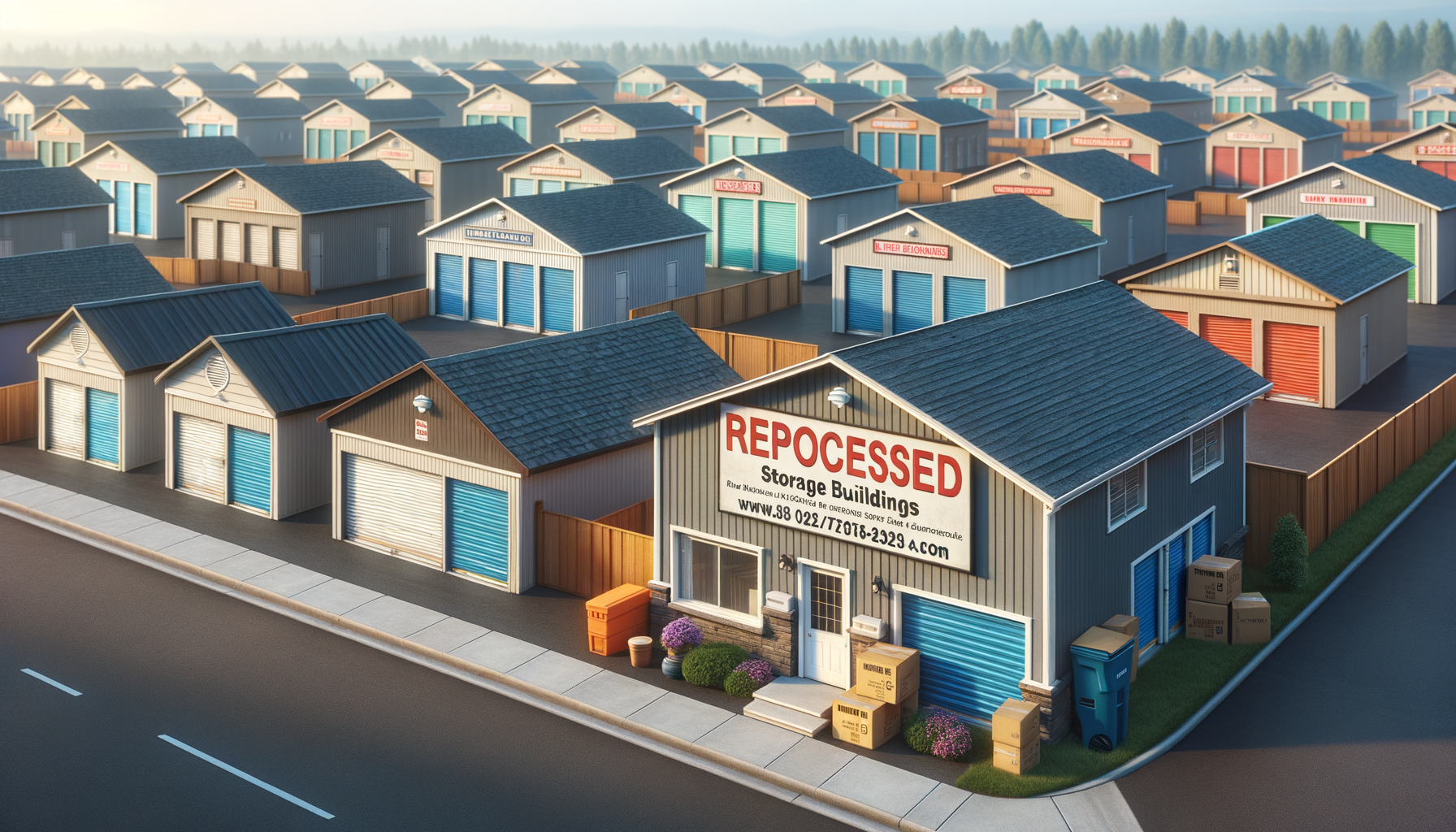Understanding Repossessed Storage Buildings
Repossessed storage buildings are structures that have been reclaimed by lenders due to the owner’s inability to meet financial obligations. These buildings often become available for purchase at significantly reduced prices, offering a budget-friendly option for individuals and businesses in need of extra storage space. Understanding the nature of these buildings is crucial for making an informed purchase decision.
Typically, repossessed storage buildings are in good condition, as lenders aim to sell them quickly. They come in various sizes and types, from small sheds to larger warehouse-type structures. The diversity in size and design makes them suitable for a range of uses, including personal storage, business inventory, or even as workshop spaces.
When considering a repossessed storage building, potential buyers should be aware of the condition of the building, any necessary repairs, and the terms of sale. It’s also essential to research the local market to ensure you are getting a fair deal. Consulting with a professional or conducting a thorough inspection can provide valuable insights into the building’s value and potential hidden costs.
Finding Repossessed Storage Buildings in Your Area
Locating repossessed storage buildings in your area requires some research and networking. There are several methods to find these properties, each offering unique advantages.
One effective approach is to contact local banks and financial institutions, as they often have a list of repossessed properties. These organizations are usually eager to sell such properties to recover their losses, making them a reliable source for potential buyers.
Another option is to attend auctions where repossessed properties are sold. These auctions can be a treasure trove for bargain hunters, but it’s essential to be prepared. Research the properties beforehand, set a budget, and be ready to act quickly when you find a suitable building.
Online platforms and real estate websites also list repossessed properties, providing a convenient way to browse available options. These websites often offer filters to narrow down your search based on location, size, and price range, making it easier to find a building that meets your needs.
Evaluating the Condition and Value of Repossessed Storage Buildings
Assessing the condition and value of a repossessed storage building is a critical step in the purchasing process. This evaluation ensures that the building meets your requirements and that you are making a sound investment.
Start by inspecting the building’s structure, checking for any signs of damage or necessary repairs. Look for common issues such as roof leaks, foundation cracks, or electrical problems. Hiring a professional inspector can provide a thorough assessment and help identify potential issues that may not be immediately visible.
Next, consider the building’s location and its accessibility. A well-located storage building can offer convenience and potentially increase in value over time. Proximity to major roads, businesses, or residential areas can enhance the building’s appeal and usability.
Finally, compare the asking price with similar properties in the area. This comparison can help determine if the building is priced competitively. Keep in mind that the cost of any necessary repairs should be factored into your budget.
Benefits of Purchasing Repossessed Storage Buildings
Investing in a repossessed storage building offers several advantages, making it an attractive option for many buyers. The most apparent benefit is the cost savings. These buildings are typically sold at a lower price than new constructions or traditional real estate, allowing buyers to acquire valuable property at a fraction of the cost.
Repossessed buildings also provide flexibility in use. Whether you need additional space for personal belongings, business inventory, or a workshop, these buildings can be adapted to suit various needs. Their diverse sizes and designs make them suitable for a wide range of applications.
Additionally, purchasing a repossessed building can be a quicker process compared to building new structures. With the building already in place, buyers can move in or start using the space almost immediately, saving time and reducing the hassle of construction.
Finally, investing in a repossessed building can be environmentally friendly. By repurposing an existing structure, you reduce the demand for new materials and minimize construction waste, contributing to a more sustainable approach to real estate.
Tips for Successfully Acquiring a Repossessed Storage Building
Successfully acquiring a repossessed storage building involves careful planning and strategic decision-making. Here are some tips to guide you through the process:
- Research Thoroughly: Gather as much information as possible about the building, its history, and the local market conditions. This research will help you make an informed decision and avoid potential pitfalls.
- Set a Budget: Determine your budget, including the purchase price and any additional costs for repairs or modifications. Sticking to your budget will prevent overspending and ensure a financially sound investment.
- Inspect the Property: Conduct a thorough inspection to identify any issues that may affect the building’s usability or value. Consider hiring a professional inspector for a comprehensive evaluation.
- Negotiate Wisely: Be prepared to negotiate the purchase price. Use your research and inspection findings as leverage to secure a fair deal.
- Understand the Terms: Carefully review the terms of sale, including any conditions or restrictions. Understanding these terms will help prevent surprises and ensure a smooth transaction.
By following these tips, you can increase your chances of successfully acquiring a repossessed storage building that meets your needs and offers excellent value.








